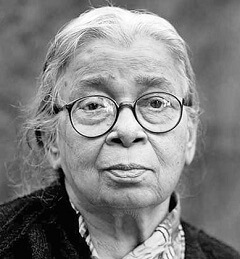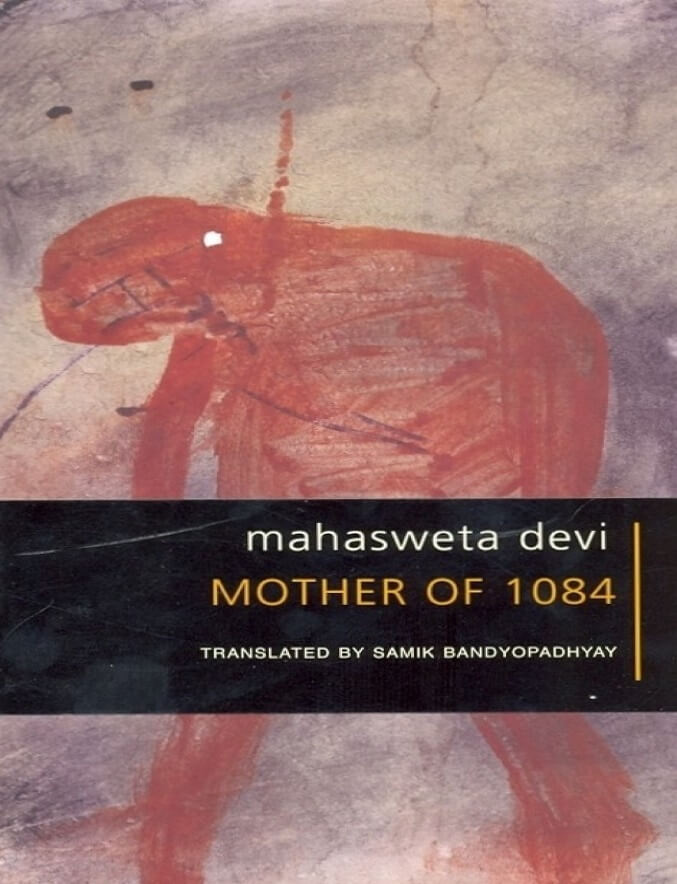Mahasweta Devi
Famous Indian novelist and short story writer Mahasweta Devi specialised in writing narratives with female or underprivileged characters. When India was dealing with communal problems like inequality, a common voice prevailed despite being enslaved by the British Raj. Mahasweta Devi was a courageous and kind lady. Her whole life had been devoted to making a difference for the Indian people. She described how Dalits and tribes were judged unfairly in her writing. In addition to receiving the Ramon Magsaysay Award in 1997, Devi also received a nomination for the Man Booker Prize in 2009. Her writing abilities helped her attain recognition on a worldwide basis. Mahasweta Devi has become known for her political writing style as well as for her major contributions to communities of landless workers in eastern India, where she devoted many years working. Her close relationships with these communities gave her the knowledge required to comprehend local problems and start recording them; as a result, she became a sociopolitical commentator for the underrepresented group. Let's commence with an article about Mahasweta Devi's life. Personal LifeMahasweta Devi was an Indian author and activist who battled principally for freedom and against intolerance opposed to scheduled tribes. Mahasweta Devi was born in Decca, which nowadays is referred to as Dhaka. Both of her parents were writers, Maish Ghatak and Dhairitri Devi; one of them was a novelist and poet, while the other one was a writer and a social worker. Ritwik Ghatak, an esteemed artist and the other founder of India's Economic and Political Weekly, was Mahasweta's paternal uncle. She first studied at Eden Montessori School in Dhaka, Bangladesh but then relocated to West Bengal. She attended Midnapur Mission Girls High School there to complete her education. Also, she was accepted into Beltala Girls' School and Santiniketan. She enlisted in Viswa Bharati University to finish her undergraduate degree in English, and following that, she attended Calcutta University to get her master's degree in the same. She was married twice. She was married to Bijon Bhattacharya on February 27, 1947. Nabarun Bhattacharya, a child she had with Bijon, grew up to become a writer of fiction and a political commentator. In her entire life, she experienced a wide range of professions, the first of which involved working in a post office, yet she got fired from that position due to her communist views. Even for those who couldn't read or write, she wrote letters. She got married to Asit Gupta in 1962, but the couple split up in 1976. She received medical treatment at Kolkata's Belle Vue Clinic after suffering a heart attack on July 23, 2016. On July 28, 2016, she passed away due to organ dysfunction in several systems. Narendra Modi, the prime minister, repented on Twitter. CareerMahasweta Devi wrote 100 Bengali books. Her writings tend to be translated into various languages. She wrote a biography of Jhansi ki Rani entitled Jhansir Rani, which was released in 1956. In order to write this book, she completed research in Jhansi. She strongly worked for the rights of Adivasi, Dalit, and other minorities in India. She resided in Adivasi villages for a number of years while seeking to figure out the unfairness and suffering that Britishers and upperclassmen bring to these tribes. The suffering of the citizens of our nation served as the inspiration for her piece "Chotti Mundi Ebong Tar Tir". In 1964, she started working as a lecturer at Vijaygarh Jyotish Ray College. The university was for working-class women learners. She was not solely a poet at that time but also a journalist. Her paintings portrayed the treatment of Dalits by members of the Upper Caste and the British Raj. The Bengali tribes Lodhas and Shabars were under scrutiny by her. Gayatri Chakravorty Spivak provided the English translations of her writings. Devi spoke up against discrimination in various situations outside literature multiple times. Birsa Munda was one of the topics of her book Aranyer Adhikar, and as a result of her advocacy, the Jharkhand State Government eliminated the manacles off the figure of Birsa Munda. Devi served as the movement's leader during her time's policy of industrial opposition. She opposed the government's proposal to transfer land from farmers to manufacturing firms. Mamta Banerjee received her support in 2011. The campaign she led was a member that opposed the Communist Party of India's industrial policies. She was the reason Manoranjan Bypari gained early notoriety since her magazine featured his works. She showed herself deeply and emotionally in her address at the 2006 Frankfurt Book Fair. Important Projects and ConceptsThe first book written by Mahasweta Devi, Jhansi Rani, was an artificial representation of Laxmibal, a ruler who fought in battle against the British Imperial military in the middle of the 19th century. A number of her previous works, such as Amrita Sanchay (1964) and Andhanmalik (1967), were also set in the context of British imperialism. She was greatly influenced by the Naxalite movement that took place in the late 1960s and early 1970s. In a 1983 interview, Devi identifies this emergence as a particularly major incident that she experienced "an inclination and a desire to record" (Bandyopadhyay viii). Emerging as a rural uprising of tribal citizens and landless laborers opposing landlords and moneylenders, this leftist armed movement emerged in the Naxalbari area of West Bengal. Student organizations in urban areas were drawn to this movement and participated. A widow from a wealthy family whose life is permanently changed after her son is assassinated because of his Naxalite ideas is the subject of Devi's Hajar Churashir Ma (Mother of 1084) narratives. Govind Nihalani, the cinematographer of the Bollywood film Hazaar Chaurasi ki Ma, has transformed this novel into a motion picture. 
The circumstances of tribal tribes in India are an important matter that also appears in Mahasweta Devi's literature. She has long been a fighter for the development of these groups on the social, economic, and political avenues, referring to them as "suffering observers of the India that is traveling towards the 21st century" (Imaginary Maps, xi). It is feasible to observe these issues in writings like Aranyer Adhikar (Rights of the Forest) and collections like the 1979 Nairhite Megh (Clouds in the Southwestern Sky). Birsa Munda was a tribal independence warrior, and Aranyer Adhikar, a book that was first published in 1977, relies on his life. She continued to utilize her efforts to further improve the circumstances of these tribes in India after receiving the Janpath and Magsaysay prizes and donating the winnings to tribal communities. Devi considers that those who write imaginatively must possess a social conscience. This act is essential to her perspective on the place of writers in society." I have a responsibility to the community. In spite of this, I'm not completely certain why I act in this way. Duty-driven behavior is a fixation. I have to keep my word to myself." Gayatri Chakravorty Spivak, who converted two volumes of Devi's tales into a language, notably those in Virtual Maps, believes that the way in which advocacy and literary writing interact in Devi's literature may be very important in modern academic discourse and practices. According to Spivak, Devi's work offers an example of how activism and research may mutually inform one another, presenting an essential awareness of inter-nationality and opening the door to the development of a new category of accountability for those who work in culture. During a 1998 interview, Devi was asked, "What do you prefer to do with every moment of your life?" She said, "Fight for the tribals, impoverished marginalized, and write artistically whenever I find the time" (Guha). Devi worked as a journalistic consultant for the publication Budhan: The Denotified and Nomadic Tribes Rights Action Group Newsletter. Budhan Sabar, who was brutally murdered in March 1998, gets recognition by having his name in the newsletter. Her articles are based on her own "field" events, and the two combine to create "texts," which naturally come together as one. In 1998, she worked in bonded labour and campaigned to protect the public interest against the state on behalf of indigenous people; for what she did, the Indian government awarded her the Padmashree (distinguished citizen) title. Rahul Ranjan says, "Mahasweta Devi's robust writings on topics such as social reality, social class, and the most significant, Adivasi (indigenous people), allow the readers to wander through the intricate, sometimes severe, struggle endured by the most defenseless group on the map of the nation-state. Devi's words continually depict her as passive and powerless, even when they are striving to bridge linguistic gaps.
Next TopicNisha Bhatt
|
 For Videos Join Our Youtube Channel: Join Now
For Videos Join Our Youtube Channel: Join Now
Feedback
- Send your Feedback to [email protected]
Help Others, Please Share









